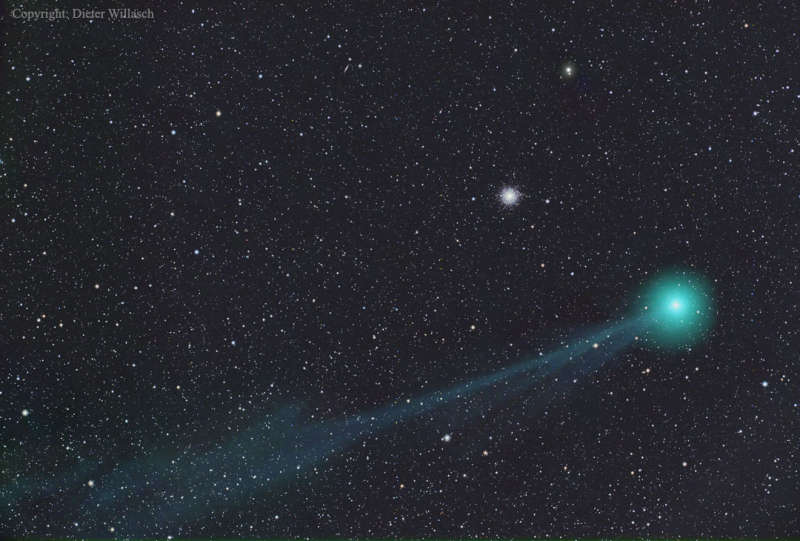Credit & Copyright: Dieter Willasch
(Astro-Cabinet)
Explanation:
Comet Lovejoy has
become visible to the unaided eye.
To see the comet, just go outside an hour or so after sunset and
look for
a fuzzy patch to the right of
Orion's belt.
Binoculars and a star chart may help.
Pictured here, Comet
C/2014 Q2 (Lovejoy)
was captured three days ago passing nearly in front of
M79,
the globular star cluster visible as the bright spot slightly
above and to the left of the comet's green-hued coma.
The nucleus of Comet Lovejoy is a giant dirty iceberg that is shedding gas into a long and
intricate
ion tail, extending
across the image, as it nears the Sun.
The comet is expected to become even
easier to spot for northern observers during January, as it is rises earlier
and, hopefully, continues to brighten.
1999 2000 2001 2002 2003 2004 2005 2006 2007 2008 2009 2010 2011 2012 2013 2014 2015 2016 2017 2018 2019 2020 2021 2022 2023 2024 2025 |
Январь Февраль Март Апрель Май Июнь Июль Август Сентябрь Октябрь Ноябрь Декабрь |
NASA Web Site Statements, Warnings, and Disclaimers
NASA Official: Jay Norris. Specific rights apply.
A service of: LHEA at NASA / GSFC
& Michigan Tech. U.
|
Публикации с ключевыми словами:
comet - globular cluster - кометы - Шаровое скопление
Публикации со словами: comet - globular cluster - кометы - Шаровое скопление | |
См. также:
Все публикации на ту же тему >> | |
